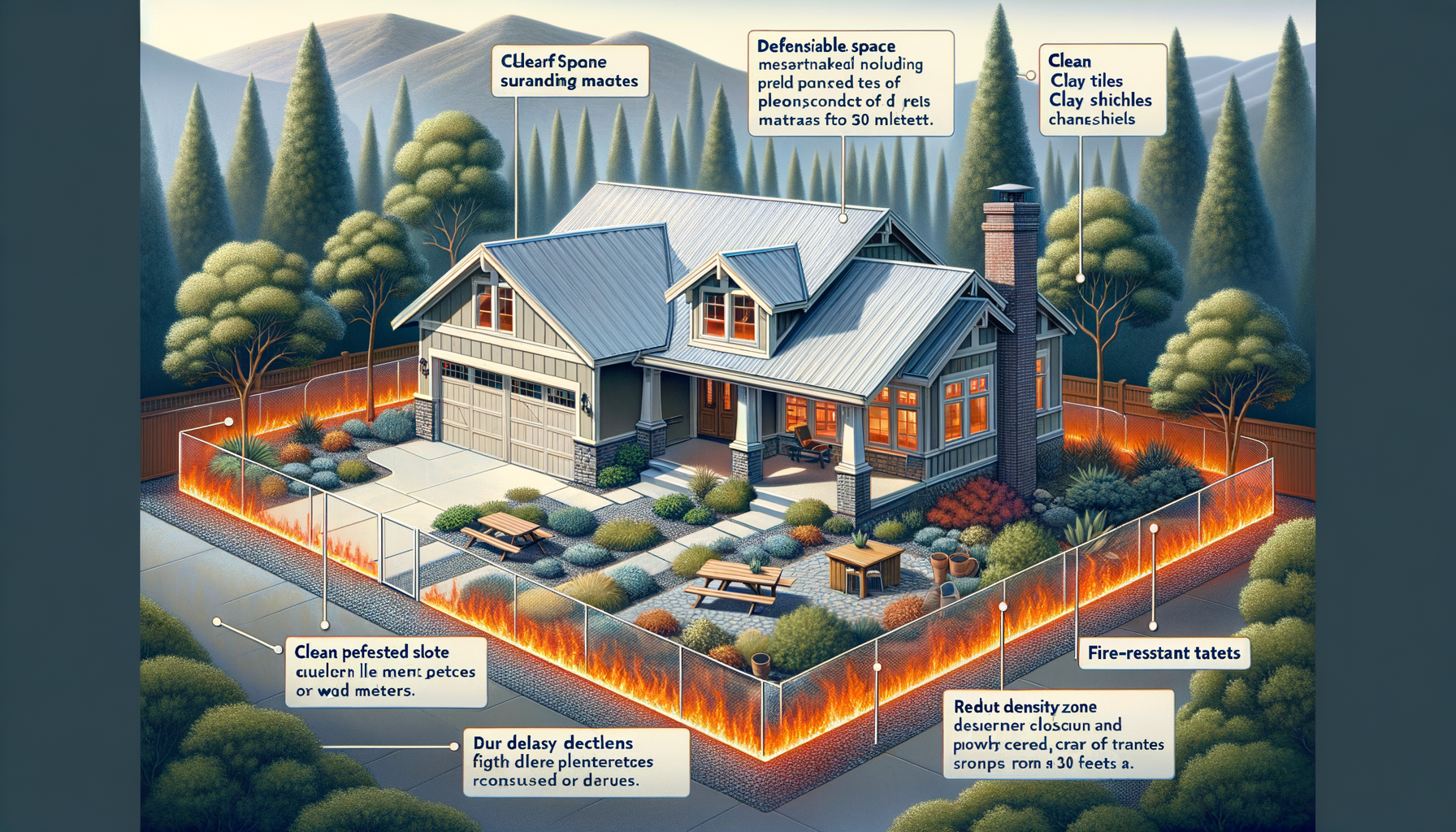Essential Strategies to Fire-Proof Your Home in a Wildfire Zone

Living in areas prone to wildfires demands vigilance and strategic planning to safeguard your home. By implementing various fireproofing techniques, you can significantly reduce the risk of fire damage. Here’s how you can fortify your property against these devastating events.
To begin, it’s critical to focus on the exterior of your home. Start by choosing fire-resistant materials for your roof and walls, as these are the surfaces most susceptible to catching fire from embers. Metal, clay tiles, and asphalt shingles are excellent options. Additionally, ensure that your roof is properly maintained, free of dry leaves and other debris.
Next, create a defensible space around your residence. This buffer zone can slow the spread of wildfire and provide a safer environment for firefighters to operate. Clear any dry vegetation, dead plants, and flammable materials within at least 30 feet of your home. Within the next 30 to 100 feet, try to reduce the density of trees and shrubs, allowing for separation between plants.
One of the more overlooked aspects is the importance of maintaining your gutters and vents. Debris-filled gutters can act like kindling, presenting a severe fire hazard. Regularly clean your gutters to prevent this risk. Furthermore, install metal mesh screens over vents to keep embers from entering your home while maintaining ventilation.
Windows and doors should not be neglected either. Dual-pane windows with tempered glass are much more resistant to heat than single-pane windows, providing an additional layer of protection. For doors, particularly garage doors, ensure they seal tightly and are made of fire-resistant materials.
Landscaping choices can also play a substantial role in defending your home against wildfires. Opt for plants with high moisture content and low resin, oil, and wax accumulation, as these are less likely to ignite. Consider incorporating gravel pathways or fire-resistant ground covers around your property to reduce direct flame contact.
An often-missed detail is the importance of a water source. You should have adequate water supply, such as a pool, well, or even a water tank equipped with a pump, to combat fire. Make sure hoses can reach all areas of your property.
Beyond physical modifications, having an emergency plan is paramount. This includes knowing evacuation routes, establishing meeting points for family members, and having a go-bag ready with essential items like medications, important documents, and basic supplies.
Community involvement is another key player in fire prevention efforts. Join local fire prevention groups and stay updated with community wildfire protection plans. These groups can provide valuable information and resources while fostering a community-centric approach to fire risk management.
Lastly, never underestimate the value of regular maintenance. Annual property checks, trimming overgrown trees, and continuously updating your fireproofing measures are crucial steps. These efforts collectively decrease the probability of your home falling victim to a wildfire.
By taking these comprehensive steps, homeowners can create a robust defense against wildfires, ensuring their property remains as safe as possible. Fostering awareness, preparation, and community action helps build resilience against the ever-present threat of wildfires.
